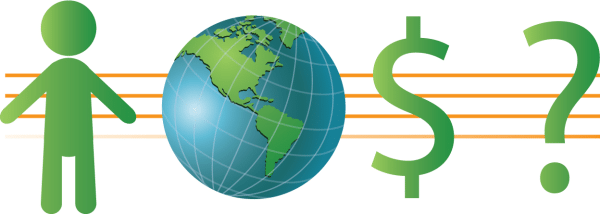
In closing our series on sustainable business practices, I felt it wouldn’t be conclusive without a look into the triple bottom line. You can refer to these three ket points as Socially Responsiblity, Environmental Soundness, and Economic Viability or simply: People, Planet, and Profit. These three pillars of business effort are the core of what makes a business sustainable.
Impacts to people are huge for businesses. It starts with its employees at number one, then the people who live near its operations, the people who purchase their goods or services, the people who sell them goods and services, the people who come into contact with any byproducts from their goods or services, the people who are impacted by any changes their operations cause to the environment, etc.
Protecting our planet may be regulated by local municipalities, states and the U.S. EPA – but policing actions are not the same as preventing damage. Consider the environmental hierarchy: reduce, reduce, and recycle. Recycling has the lowest benefit. Reducing wastes and impacts – by not creating them at all – has the most far reaching effect.
Profit is not a four letter word. Profit is a very good thing for the growth of our economy and the improvement of job markets. And it is a proven fact that doing the right thing for our environment can also be lucrative for business. For example, reducing energy usage reduces costs which can drop straight to the bottom line. Innovations in existing products and the development of new products and services to enter the marketplace with an added green benefit or selling point also contribute to increased profitability.
At Heritage, we added a fourth pillar in our sustainable efforts – patrons. Our Patrons are the consumers, people and businesses who engage with our services. Going full circle to assure we consider the ripple effect of all our actions, we believe it is “material” for our business to focus on impacts to our patrons.
If you do your sustainability homework on many other large businesses, you will see that many adjust their focus points as well to complement their business. But no matter what you call them, principles of the triple bottom line are covered.
The upcoming 2013 GRI Global Conference on Sustainability and Reporting has the theme of “Information – Integration – Innovation.” Will this be the set of buzz words for sustainability in the years to come? Freely given information is certainly easier to understand than making sense of company transparency. To me, Integration in this context means making sustainability a part of every aspect of your business – management, employee, and consumer engagement. And again Innovation: seeking new ideas and redesigned old ideas that will change our impacts on the world.
If I’m right about this new wave of understanding, remember you read it here first.
More News From Heritage
-
3/6/25
Accelerating Action: Celebrating International Women’s Day
Learn about how we're celebrating International Women's Day
-
2/21/25
Heritage Announces East Liverpool, Ohio 2025 Environmental Grant Program
Learn about our East Liverpool Ohio grant opportunity!
-
2/18/25
Heritage Environmental Services Announces James (Shelby) Marlow as Chief Financial Officer
Heritage Environmental Services announced today that James (Shelby) Marlow will join the organization as Chief Financial Officer.
-
1/31/25
January Community Engagement Initiative: Home/Work Energy Reduction
Learn about our January community engagement initiative
-
1/29/25
Heritage Environmental Services Announces Chris Ebeling as Chief Commercial Officer
Heritage Environmental Services announced today that Chris Ebeling will join the organization as Chief Commercial Officer.
-
1/28/25
Heritage Environmental Services Addresses Industry Challenges with New State-of-the-Art Shredder
Heritage Environmental Services announced a new state-of-the-art shredding unit.
-
1/7/25
Navigating e-Manifest: What You Need to Know About Hazardous Waste Compliance
Learn about the e-Manifest Third Rule changes that begin January 22, 2025
-
12/23/24
Wreaths Across America 2024
This year, through collective effort and heartfelt generosity, we sponsored 727 wreaths and transported two truckloads of wreaths across the country.








